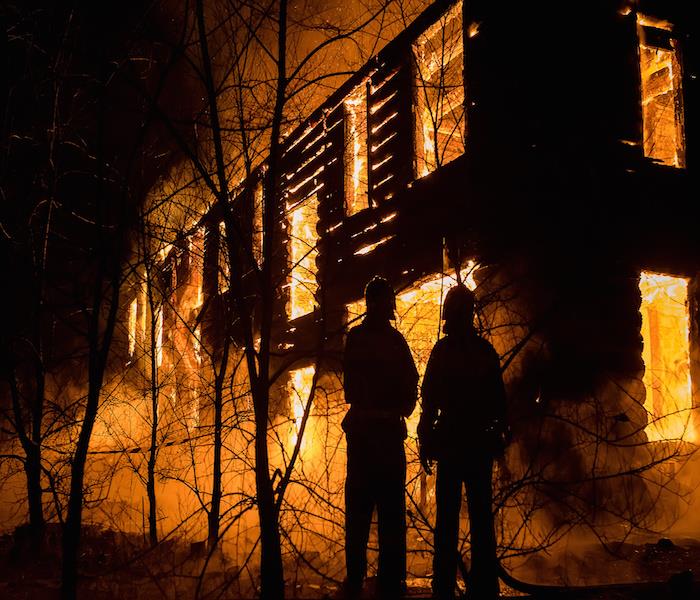What to Do After a Fire
7/18/2016 (Permalink)
If you suffer a fire in your home, putting the flames out is just the beginning. As time goes on, the smoke and soot that has accumulated has the potential to cause more damage. To prevent any further damage from occurring, you should contact the professionals at SERVPRO who have the expertise to help prevent any further damage. But, while you should contact the professionals immediately, every second counts and you may want to take steps to help prevent further damage from occurring.
Ash and Smoke Damage
Much of the damage that will be caused by a house fire isn’t from the flames or the searing heat but from the ash and smoke that comes with it. Ash and smoke can cause extensive corrosion, etching, discoloration, and powerful odors around the house. The damage starts with the discoloring of most surfaces. Within minutes, anything that is made of plastic or was close to the fire will start to discolor. Within hours, fiberglass and finishes on any appliances will begin to yellow and metals may tarnish. Within a few days, walls, clothing, and upholstery will permanently discolor, wood and vinyl will need refinishing or replacement, and metals will start corroding. Due to the quick progression of damage that can occur to most of the objects around the house, you’ll need to contact the IICRC-certified professionals at SERVPRO.
Get Permission to Re-Enter the Home
When a fire occurs in your home, you should use your escape plan to get out as quickly as possible. And before re-entering the house, wait until you receive permission from the fire marshal. The soot and dirty water that collects in the home can contain dangerous bacteria. It’s important to allow the professionals to handle this before re-entering the home. Further, coming into contact with fire damaged materials can be hazardous. You may want to enter the house as soon as possible to assess the damage but waiting for the fire marshal to give you permission to re-enter can save further trouble.
Tips to Prevent Further Damage
Open Windows to Ventilate
Ventilation is key to the restoration of a home after a fire. Firefighters ventilate to remove smoke, heat, and fire gases but you can do it to create a better environment and prevent the possibility of any further damage occurring. It’s important to know that improper ventilation or the air being delivered at the wrong time can be hazardous. That’s another reason why it’s important to wait for the fire marshal to give you permission to re-enter the home.
To help circulate the air around the house, consider installing a fan. The firefighters may have caused significant water damage in the home in their attempt to put out the fire. Cold air typically is more effective than warm air at removing moisture from the home so if there has been substantial water damage and the weather is warm, the windows may need to be kept shut and a dehumidifier may be the best option.
If the weather is cold outside, you’re heating system is operating and the cold air will usually help to remove any moisture. If this is the situation, you’ll want to change the furnace filter daily until it shows that there is no soot in it.






 24/7 Emergency Service
24/7 Emergency Service
